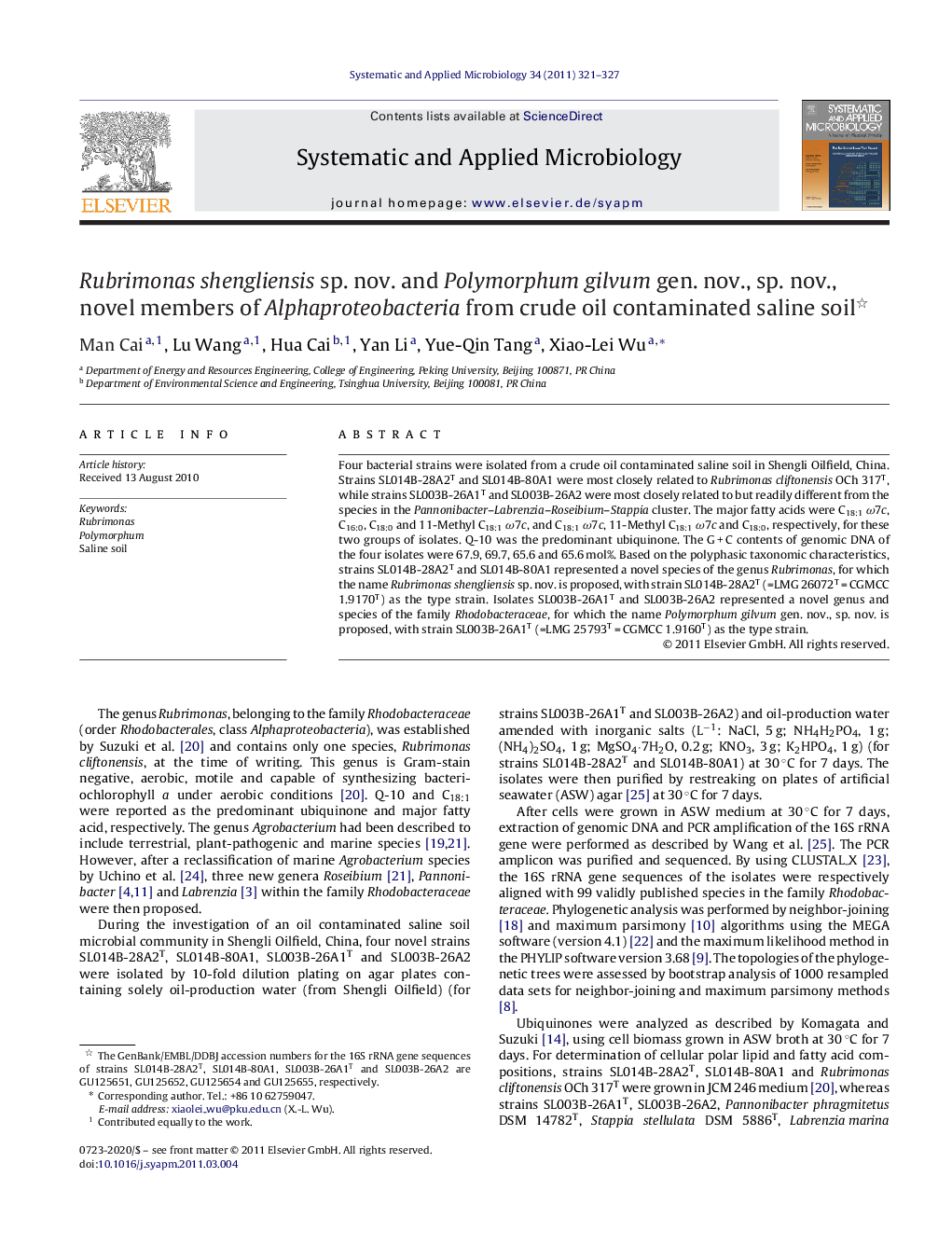| کد مقاله | کد نشریه | سال انتشار | مقاله انگلیسی | نسخه تمام متن |
|---|---|---|---|---|
| 2063865 | 1076789 | 2011 | 7 صفحه PDF | دانلود رایگان |

Four bacterial strains were isolated from a crude oil contaminated saline soil in Shengli Oilfield, China. Strains SL014B-28A2T and SL014B-80A1 were most closely related to Rubrimonas cliftonensis OCh 317T, while strains SL003B-26A1T and SL003B-26A2 were most closely related to but readily different from the species in the Pannonibacter–Labrenzia–Roseibium–Stappia cluster. The major fatty acids were C18:1ω7c, C16:0, C18:0 and 11-Methyl C18:1ω7c, and C18:1ω7c, 11-Methyl C18:1ω7c and C18:0, respectively, for these two groups of isolates. Q-10 was the predominant ubiquinone. The G + C contents of genomic DNA of the four isolates were 67.9, 69.7, 65.6 and 65.6 mol%. Based on the polyphasic taxonomic characteristics, strains SL014B-28A2T and SL014B-80A1 represented a novel species of the genus Rubrimonas, for which the name Rubrimonas shengliensis sp. nov. is proposed, with strain SL014B-28A2T (=LMG 26072T = CGMCC 1.9170T) as the type strain. Isolates SL003B-26A1T and SL003B-26A2 represented a novel genus and species of the family Rhodobacteraceae, for which the name Polymorphum gilvum gen. nov., sp. nov. is proposed, with strain SL003B-26A1T (=LMG 25793T = CGMCC 1.9160T) as the type strain.
Journal: Systematic and Applied Microbiology - Volume 34, Issue 5, July 2011, Pages 321–327